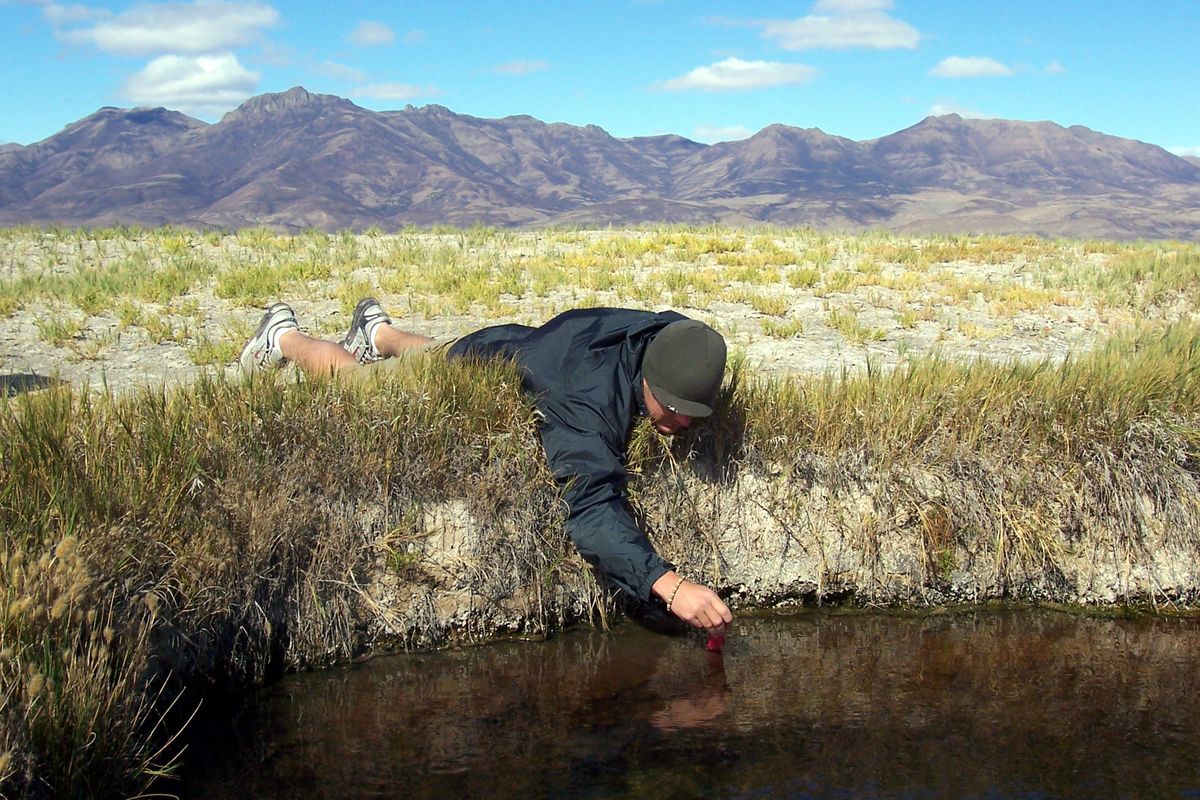University of Idaho’s new professional science masters

Next winter, a new breed of scientist will emerge from the laboratories and lecture halls of the University of Idaho. These graduates will be armed not only with technical expertise in science and mathematics, but also with the ability to communicate with the broader public, manage the financial and organizational aspects of research projects, and understand the ethical and cultural implications of their discoveries. These well-rounded scientists will obtain their broad set of tools in a new degree program offered at the University of Idaho - A Professional Science Master’s (PSM) in Natural Resource and Environmental Science.
The Idaho Board of Education gave final approval to create the program on June 17, 2010, which meant the school had only a few weeks to recruit students before the first day of class on August 9. Considering this frenzied timeline, program staff was satisfied with an incoming class of nine. Associate professor and director of the University’s environmental science program, Stephen Mulkey, while pleased with initial turn-out, expects enrollment to increase next year through word-of-mouth, reputation and smoke signals (the only kinds of advertising he jokes the University can afford).
Humor aside, Mulkey is confident that high job placement rates will attract future students to the program. “Our graduates are going to be extremely employable. Anyone that finishes is almost certainly going to get a good job.”
Such assurances are rare in today’s economy, but Mulkey is not alone; he shares his optimism with the National Science Foundation (NSF), which recently injected $15 million in grants to create this and 20 other similar programs at campuses across the nation. The rise in PSM programs came as a response to industry complaints that graduates of standard academic masters were lacking necessary communication and project management skills.
“While the traditional academic masters may be a good option for those who want to do research and go on to get a PHD, it does not adequately prepare individuals who want to help municipalities, government agencies, NGO’s and small businesses navigate a changing environmental landscape,” Mulkey asserts. These people, he and the U of I academia recognized a couple of years ago, needed a program that integrated policy, business, ethics, finance and science. With NSF’s grant, U of I got the resources it needed to create such a program.
The degree offers seven different program tracks: Restoration ecology, environmental contamination, sustainability science, water resources management, management of regulated river systems, eco-hydrology science and management, and climate change. Each track requires the completion of “transferable skills courses,” which depart from the traditional science curriculum by teaching ethics, communications, finance, and project management.
An internship requirement gives students a welcome reprieve from classroom monotony, and a chance to network with potential employers. Mulkey describes the experience as an extended job interview. “The internship lets students get their feet in the door in the industry they’re trained in, and while they may not go to work for that particular company, they’re going to make the contacts they need.”
Twelve employers have already committed to accepting students for internships, including the National Park Service, the Bureau of Indian Affairs, the Rocky Mountain Research Station of the U.S. Forest Service, the Idaho Water Resource Board, the Idaho Department of Environmental Quality, the Palouse Clearwater Environmental Institute, the Nature Conservancy and the forest and fisheries departments of the Nez Perce Tribe. Various private businesses have committed as well.
The Nez Perce Tribe’s participation is particularly important to the University. According to Mulkey, “Many of the decisions that will be made about natural resources in the intermountain west are either under direct control or strongly influenced by native stakeholders. All of the tribes have their own divisions of forestry and fisheries, which means that training Native Americans in natural resources and environmental science is increasingly important.” For this reason, the program’s head recruiter, Marci Miller, is targeting native students.
Of the current class, two are tribal members. One of these students is 28 year-old Maggie Picard, a member of the Saddle Lake Tribe in Alberta, Canada, and holder of a B.S. in native environmental science. Maggie first heard about the program from her advisors at Northwest Indian College in Bellingham, Wash., who encouraged her to apply.
According to Maggie, the program’s curriculum fit perfectly with her long-term goal: Working with tribes to incorporate treaty rights into sustainable environmental policies. This summer, Maggie will intern with the Nez Perce Tribe’s fisheries department, where she expects to collect and analyze data and help develop a plan to reduce the Tribe’s carbon footprint.
All of Maggie’s educational expenses are funded by the $693,000 grant the University received from NSF to develop the program. Of the total award, only 8% can be spent on the University’s overhead expenses; the rest must go to the students. So far, the school has kept costs relatively low by using existing curriculum, and of the nine students currently enrolled, seven are supported by grant funds.
The grant runs for three years, after which the expectation from NSF and the University is that the PSM be sustainable entirely by student fees. This puts a lot of pressure on Marci Miller to recruit paying students. Fortunately, she doesn’t seem too worried. According to her, there is significant interest from people as far as Alaska and New Mexico. “I think this is because our program is very unique,” she says, “Oregon and Utah are the only places in this region that have anything comparable.”